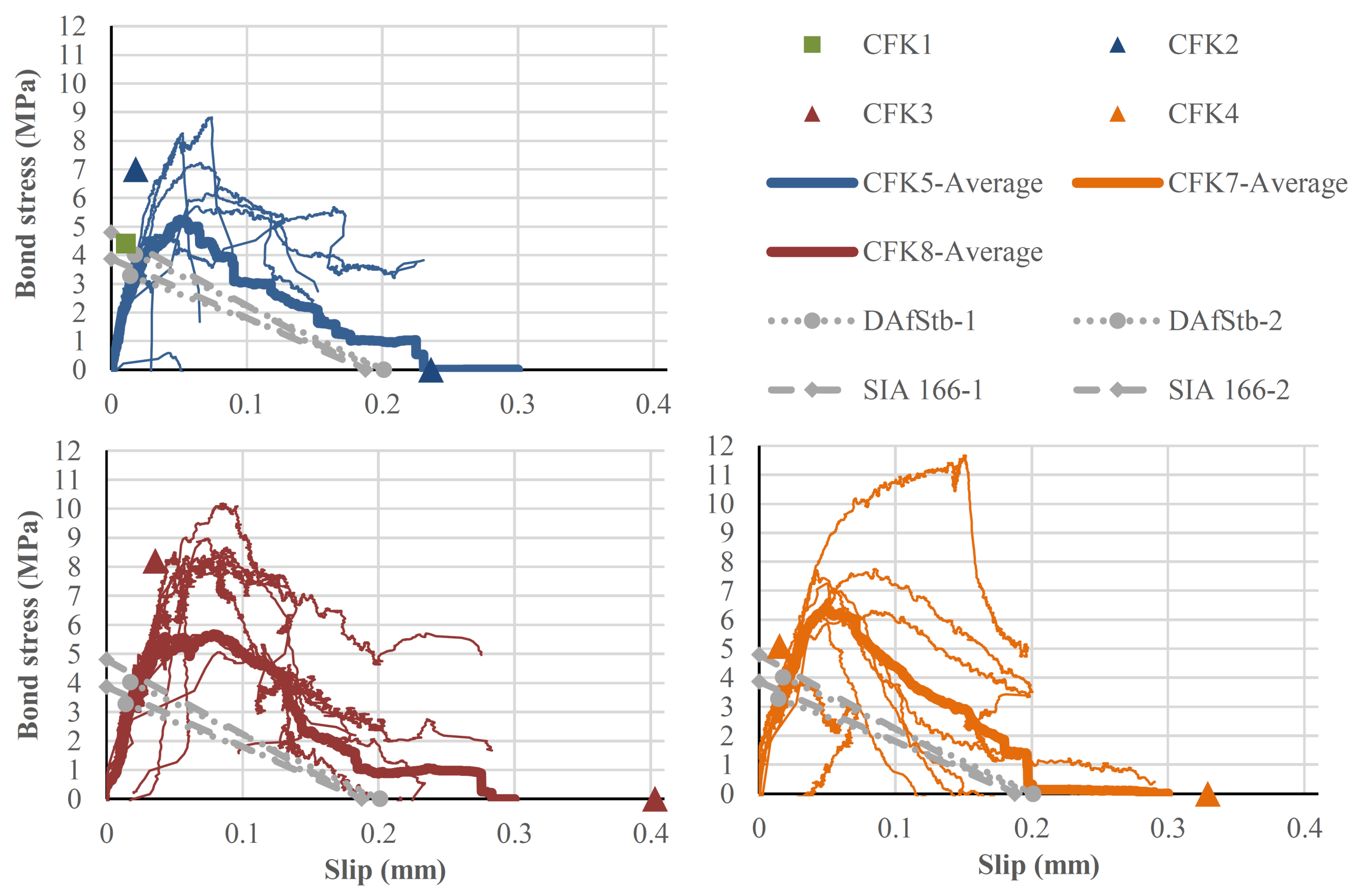Tensile tests on reinforced concrete members retrofitted with CFRP laminates
(original title: Zugversuche an mit CFK-Lamellen verstärkten Stahlbetonelementen)
Author: Alexander Gomer
Language: German
Abstract
Idealized material models are available to the designer as a basis for the design of structures. For an application of externally bonded carbon fibre reinforced polymers (EB-CFRP) on concrete surfaces – usually used for retrofitting existing structures – several models exist which describe the composite behaviour in a highly simplified way. The present work is primarily concerned with an experimental verification of three models used in Switzerland of the composite bond shear stress-slip relationship between CFRP laminates and concrete. The specially designed four test specimens are adapted to the model of the mixed reinforced tension chord. The load-deformation behaviour of the tensile test may be analytically recalculated on the basis of four clearly defined load levels and checked with regard to bond shear strain and slip distribution.
The used measuring technique, digital image correlation (DIC) needed to fulfil high demands. With the use of DIC measurement systems, the 3D full-field deformation measurements uncertainty was reduced to 2σ(εyy) = 0.138‰ at a spatial resolution of 2.5 mm after applying time and space filters. A detailed examination of the extensive influencing parameters on the measurement quality of the DIC measuring system led to new practical findings for its application.
The procedure chosen in the context of this work for the representation of the bonded stress-slip relationship at measuring points between two adjacent cracks shows results that are comparable with previous research works. With the help of novel measuring systems, it was shown quantitatively that the course has a clear stress increase branch and a subsequent strengthening branch. The gradient of the stress-increasing branch coincides in almost all results with the model of Czaderski (2012).

